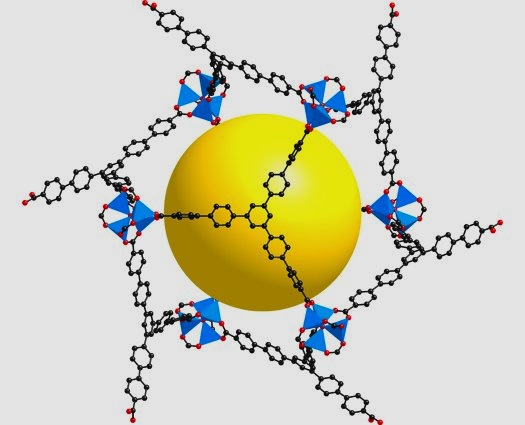

It goes without saying that global warming is one of the thorniest problems of our time. If only we had some kind of sponge to just soak up all that carbon dioxide! The Metal Organic Frameworks (MOFs) developed by UCLA researchers might not be a catchall solution. But as the most porous materials on earth, they can be used to store, separate or convert molecules–and could help absorb harmful gases before they reach the air.

Lead researcher Omar Yaghi discovered a way to make highly porous MOFs in 1999, and his team continues to update that work today–their most porous materials to date are called MOF-200 and MOF-210. The pore aperture measures of these materials is 32 by 24 angstroms (ten billionth of a meter). The internal diameter is 47 angstroms. We’re talking in pretty tiny terms here, but those are the largest reported MOF pore measurements we know of. Other materials like mesoporous silica and porous carbon have very large aperture and pore sizes, too. One difference: they don’t have the same flexible structure as MOFs. The researchers found that the pore aperture of MOFs can be controlled on the angstrom level by increasing the number of atoms in the organic links of its design.
Even though MOF-200 and 210 are the most porous materials on earth by a long shot, other materials in this category are still pretty impressive gas absorbers. Check out how a chemical company in Germany, applies MOFs ability to store gases for an application in vehicle fuel tanks.

Fun fact: MOFs also have very high surface area. (After all, more pores equal more surfaces.) Northwestern University researchers designed two MOFs that hold the award for greatest internal surface area. Is there a world record for the material with the most world records?
